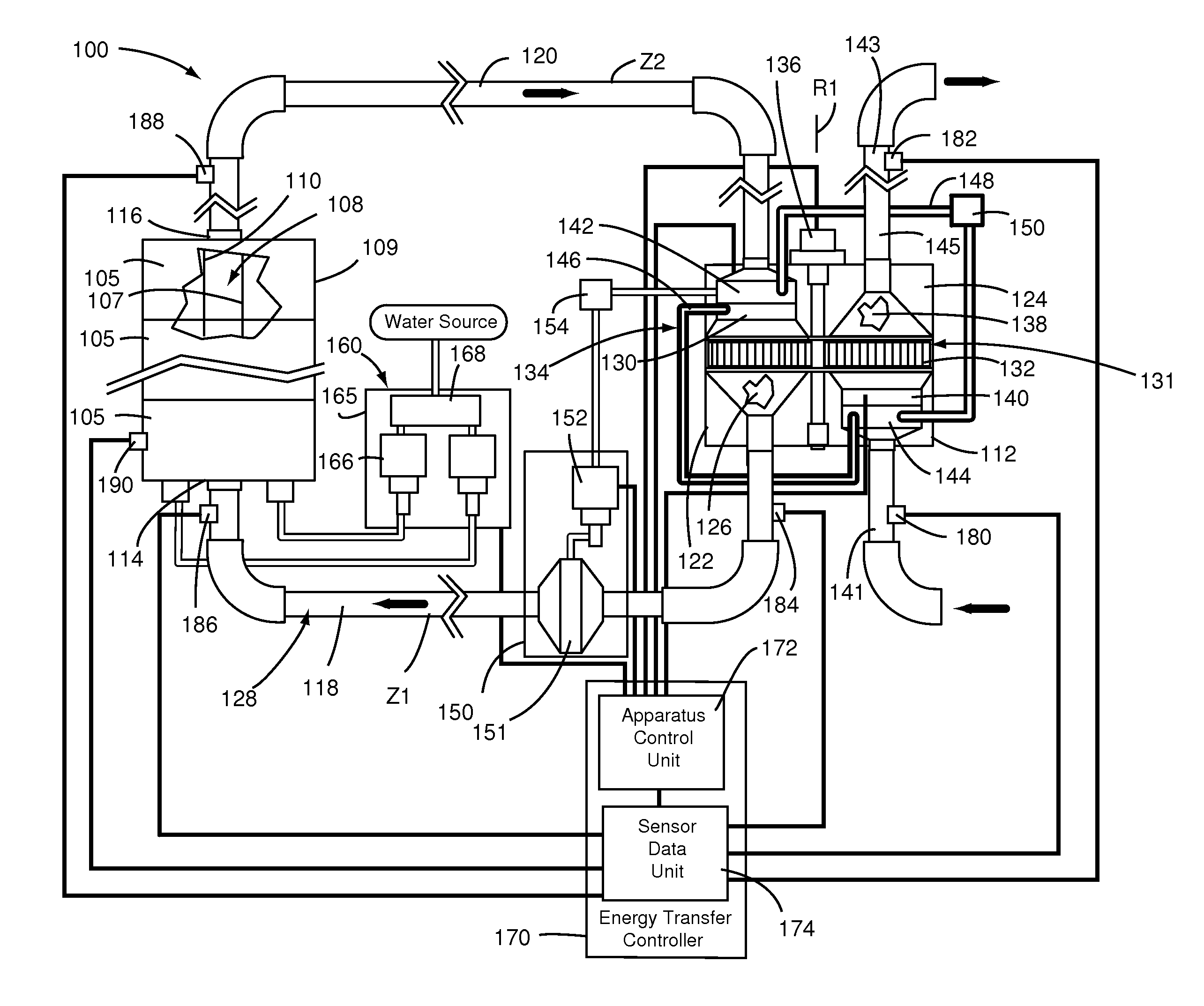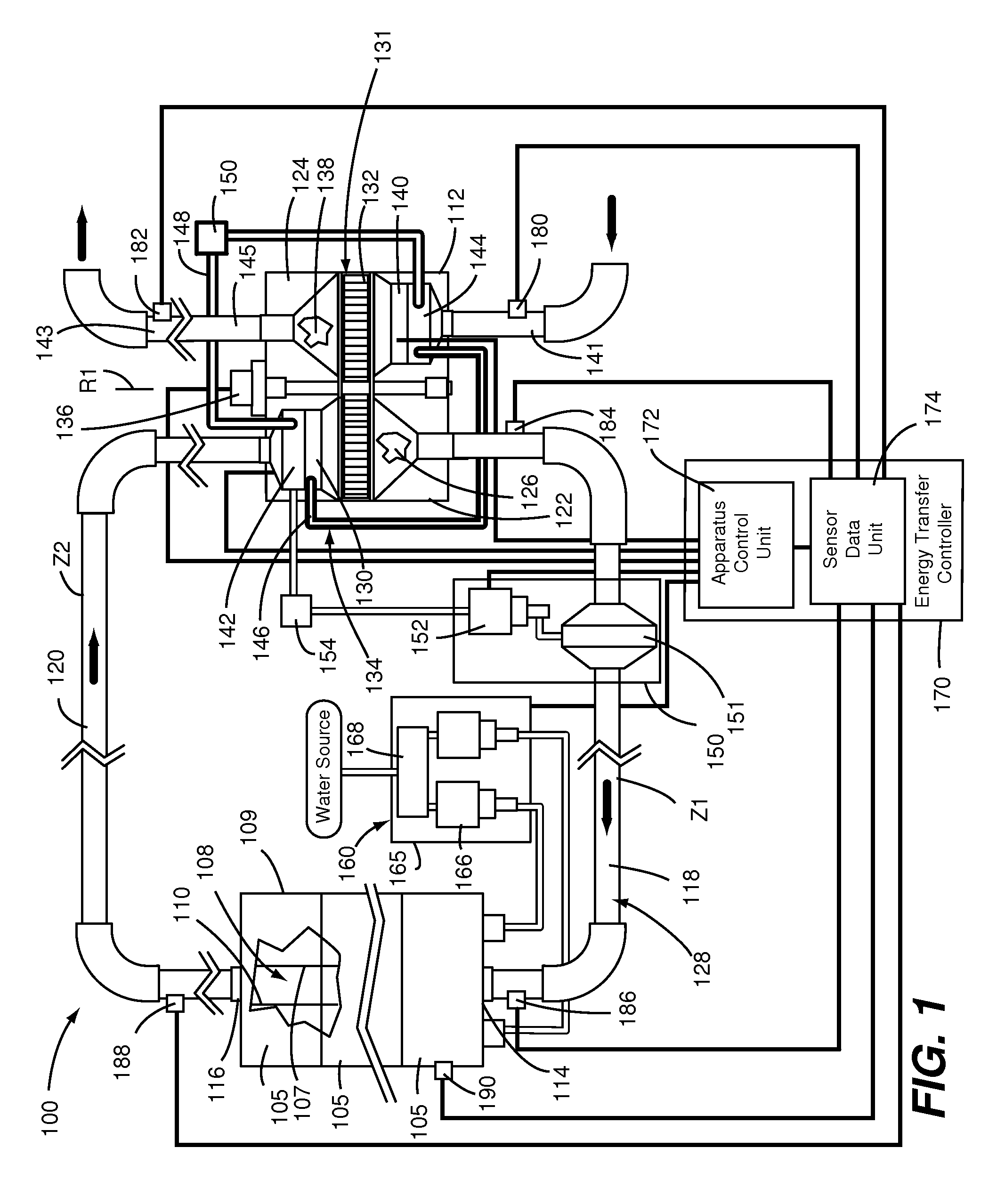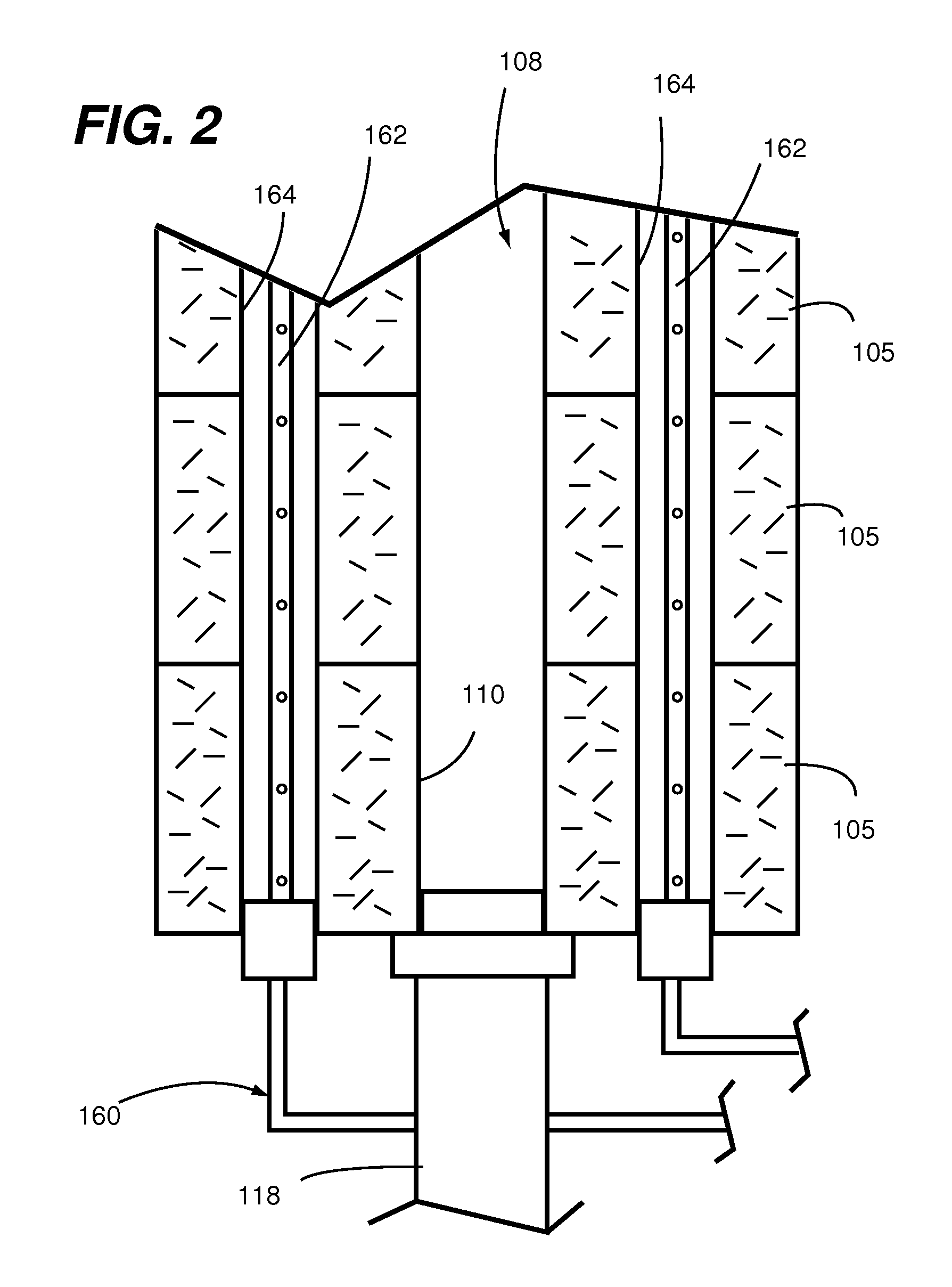Method and apparatus for climatic conditioning of space within a building structure
a climatic conditioning and building structure technology, applied in the direction of domestic cooling apparatus, lighting and heating apparatus, etc., can solve the problems of limited thermal energy storage and release, climatic control systems have not been successful at providing thermal comfort in building structures, and evaporative cooling and indirect evaporative cooling systems have only limited success with respect to compressed gas cooling systems, etc., to achieve the effect of increasing the thermal mass of said building construction articles, extending the period of time, and low energy consumption
- Summary
- Abstract
- Description
- Claims
- Application Information
AI Technical Summary
Benefits of technology
Problems solved by technology
Method used
Image
Examples
Embodiment Construction
[0019]Embodiments of the present invention provide a means for climatically conditioning the hygroscopic heat sink mass of the building construction articles and the cavities within the heat sink mass of the building structure to a moist condition and then to very dry climatic condition. A primary object of such embodiments is the climatic conditioning (sensible and latent) of the permanent heat sink mass of the building structure (e.g., building construction articles thereof) and more specifically a method and apparatus for the conditioning of the hygroscopic permanent heat sink mass. The heat sink mass comprises building construction articles having hygroscopic properties and a heat sink mass size to support thermal energy for extended periods of time and thereby extending the periods of time between activation of the cycled conditioned air streams. Furthermore the periods of time between activation of cycled conditioned air streams can be extended by the incorporation of fusion t...
PUM
 Login to View More
Login to View More Abstract
Description
Claims
Application Information
 Login to View More
Login to View More - R&D
- Intellectual Property
- Life Sciences
- Materials
- Tech Scout
- Unparalleled Data Quality
- Higher Quality Content
- 60% Fewer Hallucinations
Browse by: Latest US Patents, China's latest patents, Technical Efficacy Thesaurus, Application Domain, Technology Topic, Popular Technical Reports.
© 2025 PatSnap. All rights reserved.Legal|Privacy policy|Modern Slavery Act Transparency Statement|Sitemap|About US| Contact US: help@patsnap.com



